Posted:
19 August 2025
Bringing chemistry and photography together with CREST
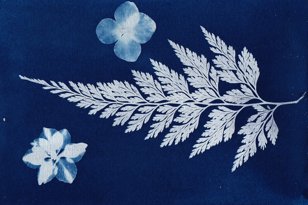
I believe [cross-curricular learning] helps students gain a deep understanding of the world around them.
This is Nicole Meredith, a chemistry teacher at Bo’ness Academy, a secondary school in Borrowstounness (known as Bo’ness) in the Central Lowlands of Scotland, speaking to us about her students earning CREST Awards.
Inspired by her hobby of photography and an interest in developing black and white film, Nicole set up an inclusive, extra-curricular photography club at Bo’ness Academy, where students worked on creating perfect cyanotypes (a photographic printing process) to earn Bronze Awards.
Nicole saw that it was an opportunity for the students to see the real-world applications of the redox chemistry they’d be learning in her chemistry classes, and appreciate the connection between science and creativity they might not have thought of before.
We spoke to Nicole about the importance of making STEM* cross-curricular, the skills the students developed and more. We also spoke to one of her students, Suzanna, about the experience of working on the project.
“I am passionate about students making connections across disciplines as I believe it promotes deep thinking and a strong working memory”
The first step of the project was for the students to learn about the chemistry behind cyanotype photography.
A camera-less technique, cyanotype photography involves laying an object on paper coated with a solution of iron salts, then exposing it to UV light and washing with water to create white and Prussian blue images.
The students created their artworks by attaching digital negatives cyanotype paper and experimenting with different factors including how long the paper should be exposed to the sun for, to create the perfect piece of photography.
There is a strong cross-curricular element to this project, showing students how science and creativity can blend beautifully. This is something Nicole feel strongly about showcasing, and sees many benefits of:
I am passionate about students making connections across disciplines as I believe it promotes deep thinking and a strong working memory
One of the participating students, Suzanna, enjoying the combination of two subjects she enjoys:
I am a very artistic and science-like person, so I feel that this promoted the mix of two very different subjects.
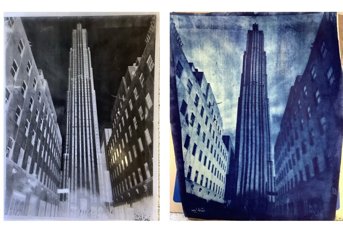
Left - negative image, right - cyanotype
"I think the skills I have developed will come in handy in science classes"
Earning Bronze Awards was an extracurricular endeavour; students worked on perfecting their cyanotypes and writing up the results during Tuesday lunchtimes.
We asked Nicole and Suzanna if working on STEM projects outside of lesson time and developing skills shone during classes. Nicole said:
Absolutely, pupils were able to manage their own workload to carry out research. Students are more knowledgeable on redox chemistry as a direct result of this project.
Suzanna can see how the transferable skills she’s learned will benefit her during future experiments and projects in any STEM discipline:
I think the skills I’ve developed will come in handy in science classes. This is because of learning to check multiple sources, so my information is correct and managing when I must proceed onto another step in any practicals performed in class.
Indeed, checking multiple sources to ensure you’re properly informed is a critical life skill whose importance cannot be overestimated, and applies to every area of life.
Completing a Bronze project involves each student writing up report describing and reflecting on their work – an activity they’ll almost certainly be repeating as continue through secondary and higher education. Nicole said:
Students were able to develop their independent research, and inquiry-based learning skills to write up their projects and achieve CREST Awards. This will prepare them well for carrying out their assignments in National 5 and Higher Chemistry.
Suzanna agreed that she had “improved on researching skills and time management skills".
Being proud
The photography club has been a great success, as Nicole tells us more students are keen to join, having seen the work the CREST Awardees have done.
The students who have completed their projects have received their Bronze CREST Awards, which can really cement their achievement and give a great feeling of accomplishment.
Suzanna said:
When I received my certificate, I felt proud of myself because of all of the effort and time that I put into my project as a whole.
Bo’ness Academy funded the Awards with a Simply CREST Grant from the British Science Association.
---------
Did you know that CREST is now free for all young people in Scotland?
Thanks to a donation from the James Weir Foundation to the British Science Association, from August 2025 you can submit for any CREST Award for free in Scotland.
Find out more below
Other blogs you might be interested
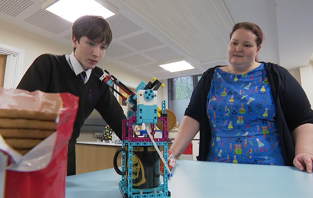 Case studyPosted:20 January 2023
Case studyPosted:20 January 2023Biscuit dunker for a CREST Award!
 Case studyPosted:6 December 2023
Case studyPosted:6 December 2023CREST and design & technology
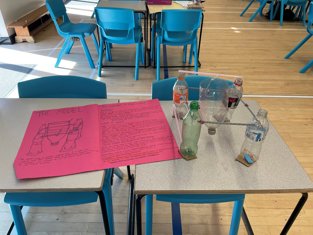 Case studyPosted:14 January 2025
Case studyPosted:14 January 2025Using Engage Grants to run CREST Discovery
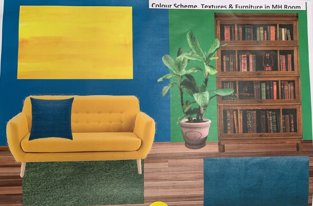 Case studyPosted:10 October 2023
Case studyPosted:10 October 2023Hearing youth voice on mental health
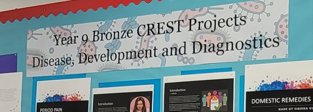 Case studyPosted:20 May 2024
Case studyPosted:20 May 2024Exploring reproductive health with CREST